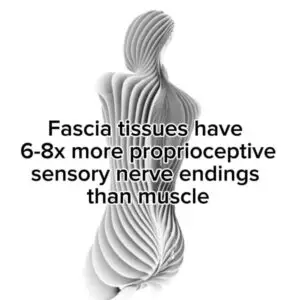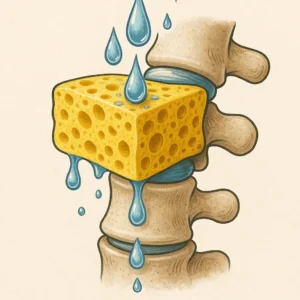Recently, at SolCore Fitness, I have had some conversations discussing the intake of water and I wanted to elaborate. Because we live in a dry, high desert environment, and the temperature has been rising in Santa Fe, staying hydrated is obviously very important. I also believe it is essential during exercise.
Water affects every organ and cell within your body. You may not have known this, but water even plays an enormous role in the health of your back and spine. The lack of proper hydration could affect your back and could be a cause of back pain. Between every two vertebrae lies a disc, which functions as a shock absorber. This disc has two parts: an outer, flexible and tough ring, and the inner, which is primarily water. All day long, as gravity works on our upright spine, water is slowly squeezed out of the discs.
 At night, when we are lying down, the discs slowly rehydrate. Our daily dehydration and nightly rehydration of the discs is the reason why most of us shorter at night than when we woke up! Regular movement helps to keep discs hydrated – as the spine moves, the discs will absorb the water we have available in our bodies.
At night, when we are lying down, the discs slowly rehydrate. Our daily dehydration and nightly rehydration of the discs is the reason why most of us shorter at night than when we woke up! Regular movement helps to keep discs hydrated – as the spine moves, the discs will absorb the water we have available in our bodies.
As long as there are adequate water levels within the body, nightly rehydration will occur. When there is not enough water available to fully hydrate the inner part of the disc, the whole piece becomes compromised. When the inner piece of the disc are dehydrated, it cannot support the load on your spine as intended, and it stresses your body causing pain. This means that drinking lots of clean water helps you to have less pain and easier movement. Don’t wait until you are thirsty to drink, that means you are already dehydrated.
Because discs do not have a blood supply, they exchange nutrients when pressure is decreased. This is why when you lie down or sleep at night, the discs will rehydrate. This process nutrient exchange can be increased even further and have more lasting results when ELDOA exercises are performed. One of the benefits of the ELDOAs is that they assist to reinforce the tissue responsible for supporting the spine in a more elongated state. The result is that the spine becomes more resilient to the compressive forces placed upon it throughout the day, as there is less water loss from the discs. However, there needs to be enough free water available in the body for the ELDOAs to be affective.
So, be honest with yourself, are you drinking enough water? Take responsibility for the health and longevity of your spine by doing these 3 simple things:
1. Drink water first thing in the morning before your coffee or tea and breakfast
2. Carry a water bottle that you really like – this will help keep you drinking throughout the day to reach your daily target of fluid ounces
3. Do 2 or 3 ELDOA exercises each night before bed
Happy Hydrating!!
Get more information @


